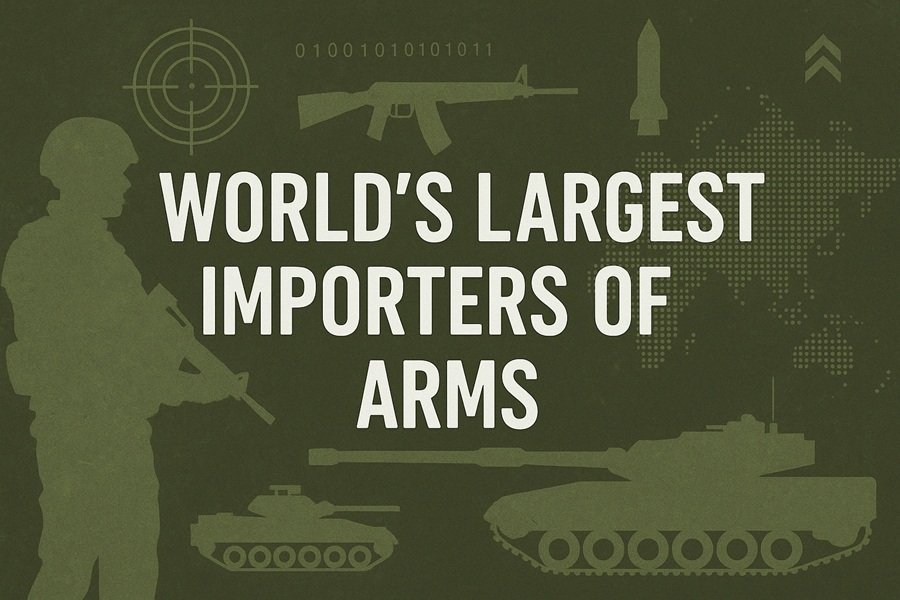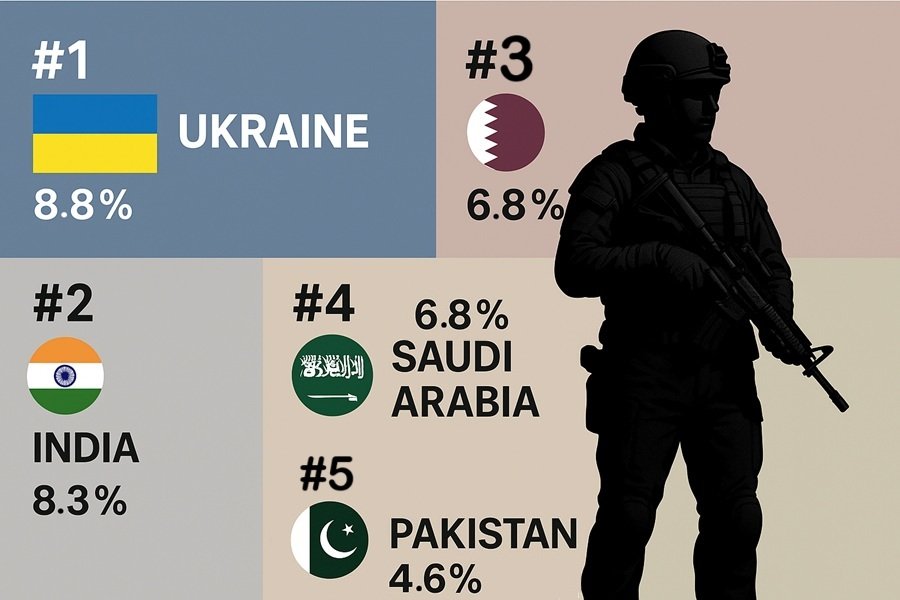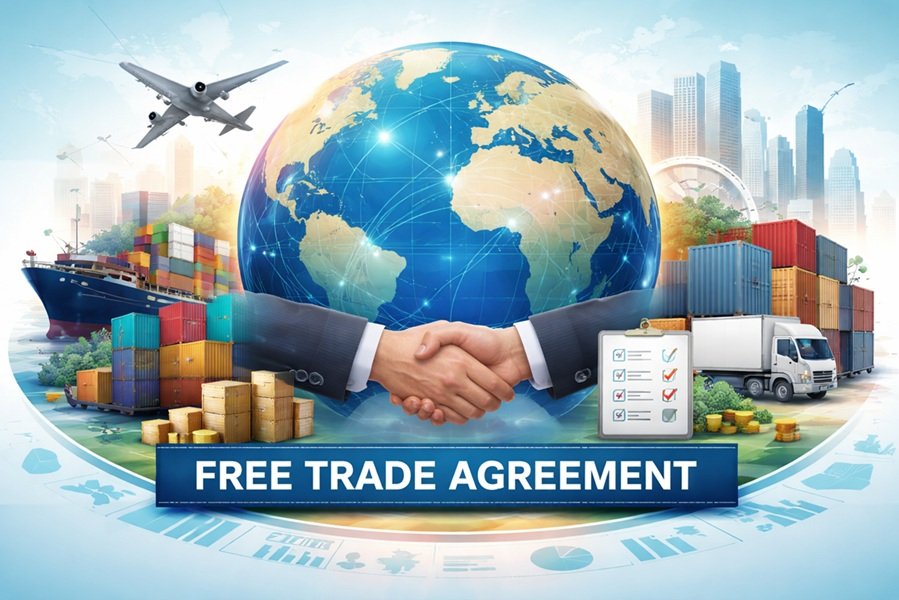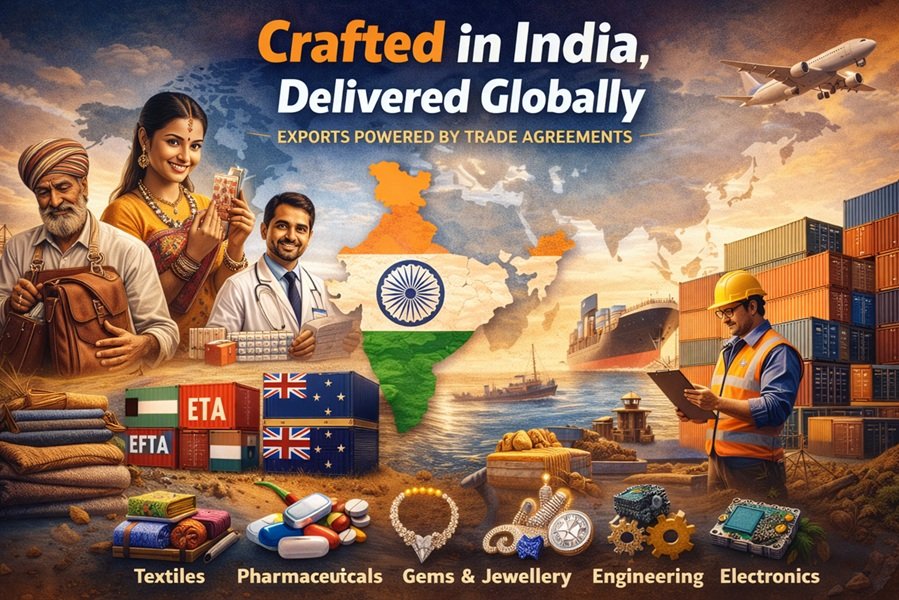
The global arms industry continues to play a critical role in shaping international security and geopolitical alliances. The latest report from the Stockholm International Peace Research Institute (SIPRI) highlights the countries leading in arms imports and the key players dominating the export market. However, emerging military operations and shifting alliances are altering traditional patterns and influencing the future trajectory of global arms trade. Here, you can explore list of Largest arms importer in the world 2025 by SIPRI.
Which Country Dominates the Global Arms Trades?
While the United States has long been the largest arms exporter globally, its influence—especially in Asia and parts of the Middle East—is gradually being challenged. In contrast, Russia continues to maintain significant influence across multiple regions, including South Asia, the Middle East, and parts of Africa, despite facing international sanctions and internal challenges.
At the same time, China’s arms industry is showing signs of decline, with reduced export growth and a narrowing list of major clients. Once considered a rising competitor in the global defense sector, China’s role is now being questioned amid economic setbacks and increased scrutiny over the reliability and sophistication of its weapons systems.
Read This: Chengdu J-20 and Shenyang J-35 vs F-35 Lightning II
Largest arms importer in the world 2025: Who’s Buying and From Whom
According to SIPRI data, five countries account for a significant portion of global arms imports, driven by regional conflicts, defense modernization efforts, and strategic alliances.

1. Ukraine – 8.8% of Global Imports
Due to the ongoing conflict with Russia, Ukraine surged to the top of global arms importers in 2024.
Main suppliers:
- United States – 45%
- Germany – 12%
- Poland – 11%
- Others – 32%
2. India – 8.3% of Global Imports
India remains a top importer, reflecting its continued defense modernization and security concerns.
Main Suppliers:
- Russia – 36%
- France – 33%
- Israel – 13%
- Others – 18%
Despite diversifying its sources, Russia still holds a commanding share of India’s arms imports, underscoring its longstanding strategic partnership with New Delhi.
3. Qatar – 6.8% of Global Imports
Qatar’s military procurement supports its modernization and security posture in the Gulf.
Main suppliers:
- United States – 48%
- Italy – 20%
- United Kingdom – 15%
- Others – 17%
4. Saudi Arabia – 6.8% of Global Imports
The Kingdom continues to rely on U.S. weaponry but is gradually exploring alternative partners.
Main suppliers:
- United States – 74%
- Spain – 10%
- France – 6.2%
- Others – 9.8%
5. Pakistan – 4.6% of Global Imports
Pakistan remains highly dependent on China for its defense needs.
Main suppliers:
- China – 81%
- Netherlands – 5.5%
- Turkiye – 3.8%
- Others – 9.8%
However, China’s declining export capability and India’s increasing regional dominance are raising concerns in Islamabad’s defense circles.
Future Prospects and Market Disruption: Operation Sindoor and its Aftermath
The recent Indian military operation—Operation Sindoor, a successful campaign against cross-border threats from Pakistan, has had significant geopolitical and economic consequences. The operation not only showcased India’s evolving military capabilities but also sent shockwaves through the global arms industry.
- India’s defense sector has seen a stock market boom, with shares of domestic arms manufacturers and defense technology firms surging post-operation.
- Conversely, Chinese defense stocks have plummeted, reflecting growing doubts about the competitiveness and reliability of Chinese military exports.
- The United States also faced backlash in several Asian and Middle Eastern markets, as its arms diplomacy failed to adapt to rapidly changing ground realities and regional power shifts.
This reshuffling is expected to influence future arms deals, defense cooperation, and global strategic alignments.
Geopolitical Implications and Shifting Alliances
The current trends reveal a world where Russia remains a formidable force in the arms market, especially across Asia and the Middle East. Despite economic challenges, Russia’s proven systems and longstanding partnerships give it an edge in many regions.
Meanwhile, China’s arms export ambitions are under pressure, with buyers increasingly looking to India, Europe, and even Russia for more reliable and battle-tested equipment. China’s economic slowdown and growing international mistrust further compound this decline.
The United States continues to dominate in Europe and the Gulf, but its influence in Asia is eroding as countries like India and Indonesia seek more diversified and locally-developed defense solutions.
Read This: Bhargavastra: India’s Game-Changing Indigenous Anti-Drone System Successfully Tested in May 2025
Conclusion
The global arms trade is undergoing a strategic realignment. While the U.S. remains a dominant exporter, its influence is no longer as comprehensive, particularly in Asia. Russia continues to maintain substantial market share, and India is emerging not just as a top importer but as a potential defense manufacturing hub following its recent military successes. As Operation Sindoor reshapes regional dynamics and financial markets, the future of the arms industry will likely see a broader diversification of suppliers, shifting allegiances, and greater emphasis on indigenous capabilities.






